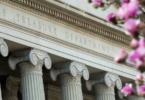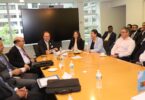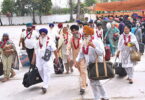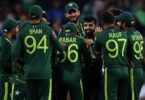Monitoring Desk
LOS ANGELES (AP) — Los Angeles will continue using a coronavirus test that federal regulators warned may produce false results while Congress, which has used the same test, is seeking an alternative.
The different responses Thursday followed a Food and Drug Administration alert to patients and health care providers that Curative’s test, which is used in at least three of the nation’s largest cities, could particularly produce false negatives. Those faulty results pose the biggest risk from a health perspective because people who are erroneously told they don’t have the virus can unknowingly spread it.
The warning comes as California copes with its worst surge of the pandemic and some of the highest levels of COVID-19 in the country. Hospitals in Los Angeles and across the southern half of the state are overwhelmed with patients, oxygen used for treatment is running low and ambulances sometimes wait hours to unload patients.
The California startup said in a statement it was working with the FDA to respond to concerns and would provide additional data to address test limitations and precautions highlighted by the agency. The company said its test was the most clinically sensitive available at scale and its performance had not changed.
The FDA action came after the company tried to “push the envelope” to expand testing beyond what it was originally approved for, which was in people with symptoms such as fever, sore throat and fatigue, or those exposed to the virus, said Dr. Jeffrey Klausner, Curative’s acting medical director.
The company submitted research to support authorization to test individuals without symptoms or exposure to the virus who could self-administer the test without supervision.
“The answer is it works pretty well, but not well enough that it gave the FDA confidence to expand … authorization to that population,” Klausner said.
He didn’t provide numbers the test’s efficacy, but said it didn’t pick up the virus in the later stages in asymptomatic people. He said the FDA’s action was a reminder to stick to the intended purpose of the test it approved.
Mayor Eric Garcetti, who embraced Curative and opened testing to everyone last spring when supply was short elsewhere, stood by the company Thursday. He said a third of the city’s positive test results have been in asymptomatic people.
“That’s 92,000 people who otherwise might not have known, might have been spreading,” he said. “That has helped us predict those surges in hospitalizations and deaths as a result. To me that proof is in the pudding.”
Admiral Brett Giroir, the Trump administration’s top testing official, said Thursday that his Department of Health and Human Services is working with the congressional physician to find an alternative test for use on Capitol Hill.
No test is 100% accurate and even the most sensitive are expected to deliver a small percentage of false results. Most of the molecular tests authorized by the FDA, including the Curative test, are expected to catch upward of 95% of COVID-19 cases.
All COVID-19 tests on the U.S. market have been quickly developed and rushed through testing to respond to the pandemic. Under “emergency use authorization,” companies such as Curative needed only show a test “may be effective,” a lower bar than the FDA’s standard under normal conditions, requiring study data showing “safety and effectiveness.”
Curative was founded just a year ago by British wunderkind, Fred Turner, then 25, who was making sepsis tests and pivoted to the coronavirus when the pandemic struck.
He developed an easy-to-use method that collected a specimen by swabbing the inside of the mouth after coughing. The test didn’t require the nasal swabs that were in short supply and had created a bottleneck at a time when more testing for COVID-19 was desperately needed.
The company’s test was was one of the few approved by FDA at the time that relied mainly on saliva or oral fluids.
Curative has scaled up quickly and expanded to testing about 1 million people a week across the U.S., including in Chicago and Houston, Klausner said. The company is also providing vaccinations.
The Houston Health Department, which only helps Curative locate and promote its test sites, was not planning to end its partnership with the company, said spokesman Scott Packard.
The FDA in its warning said that to reduce the risk of false-negative results, Curative tests should be performed according to their instructions, which state that it is for use in people displaying symptoms of COVID-19.
Despite such instructions, top federal health officials have given their blessing to use many FDA-cleared tests to screen people without symptoms, in an effort to slow the silent spread of the disease. Experts estimate 40% to 60% of people infected show no symptoms, despite carrying similar virus levels as those with full-blown COVID-19 illness.
Giroir stressed the test should only be used according to its FDA-authorized label.
“We are always open to new data from Curative to show it can be effective in other situations, but right now my colleagues at the FDA have made the conclusion that it needs to be used on-label,” said Giroir.
The FDA has previously flagged accuracy concerns with several other COVID-19 tests, including a rapid test that was frequently used at the White House last year. The agency generally discloses few details as it investigates accuracy.
FDA Commissioner Stephen Hahn said Friday that his agency neither endorses nor prohibits off-label use of any medical product, including tests. He suggested people administering the test review the data and science. The agency has not provided the data that led to its alert about the test’s accuracy.
Suzanne Sandmeyer, a professor of biological chemistry at the University of California, Irvine, questioned why the FDA had issued such a warning without more information that could be useful to the public.
“It’s disappointing they couldn’t be more specific because it might be discouraging for people who might be planning to be tested, especially if it’s the major test in LA right now,” Sandmeyer said.
Dr. Clemens Hong, who oversees Los Angeles County’s coronavirus testing, said the percentage of false negatives was very small and would not lead the county to immediately stop using the test. He wasn’t concerned that bad test results were contributing to the exponential spread of the virus in the county.
“When you have as much infection as we do in LA County, … the risk of encountering someone in the community that is positive is really high,” he said. “That’s what’s causing the spread. It isn’t the rare false negative or an occasional false negative test.”
Courtesy: AP News






